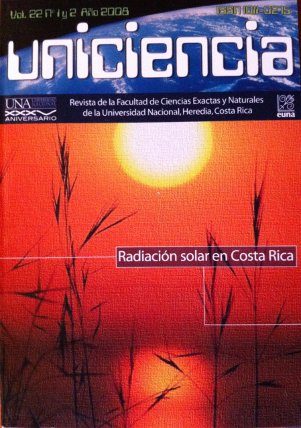Variability of thermohaline properties in Pearl Lagoon, Nicaragua (ESP)
Keywords:
Coastal lagoon, hydrography, water massesAbstract
Several hydrographic surveys were carried out in Pearl Lagoon, Nicaragua between april 1995 and december 1997 under the DIPAL (Proyecto para el Desarrollo Integral de la Pesca Artesanal en la Región Autónoma del Atlántico Sur) project. Surface temperature, salinity, dissolved oxygen and turbidity have been measured in 88 hydrographic campaigns. The annual cycle shows maximum and minimum temperatures in May (29.4 °C) and December (25.6 °C) respectively, maximum salinity (25.6 °C) in April, one month before the thermal peak, and minimum salinities (2‰) between July and August, when the annual precipitation index attains its seasonal maximum in the study area. In the case of dissolved O2 the maximum values of oxygen saturation were observed between March and May (90%), when the water turbidity in the lagoon is at its lowest and freshwater contributions from the rivers attains its minimum value. During the rainy season, in the second half of the year, there is an important decrease in oxygen contents, mainly as a consequence of the degradation of organic matter of riverine origin.Downloads
Published
How to Cite
Issue
Section
License
Authors who publish with this journal agree to the following terms:
1. Authors guarantee the journal the right to be the first publication of the work as licensed under a Creative Commons Attribution License that allows others to share the work with an acknowledgment of the work's authorship and initial publication in this journal.
2. Authors can set separate additional agreements for non-exclusive distribution of the version of the work published in the journal (eg, place it in an institutional repository or publish it in a book), with an acknowledgment of its initial publication in this journal.
3. The authors have declared to hold all permissions to use the resources they provided in the paper (images, tables, among others) and assume full responsibility for damages to third parties.
4. The opinions expressed in the paper are the exclusive responsibility of the authors and do not necessarily represent the opinion of the editors or the Universidad Nacional.
Uniciencia Journal and all its productions are under Creative Commons Atribución-NoComercial-SinDerivadas 4.0 Unported.
There is neither fee for access nor Article Processing Charge (APC)





